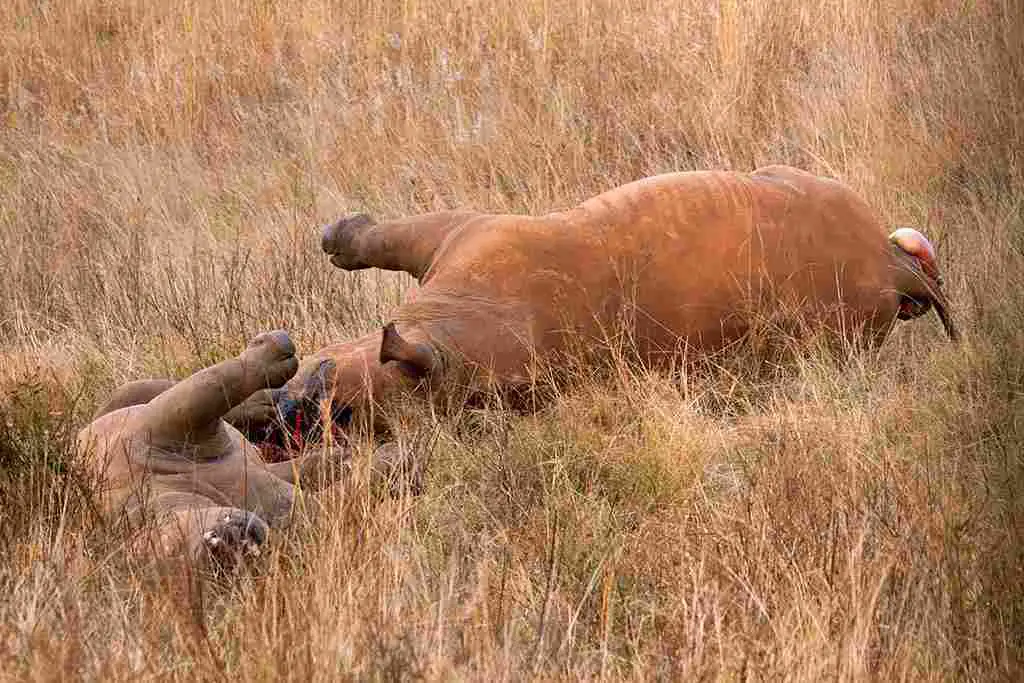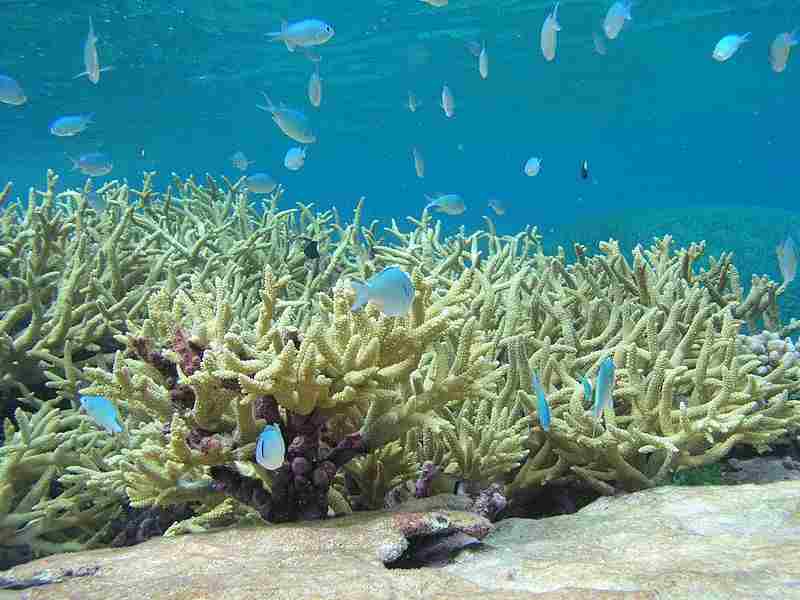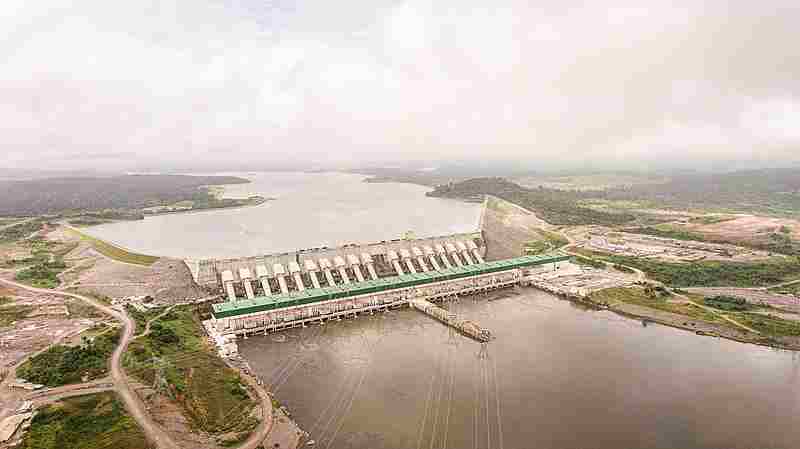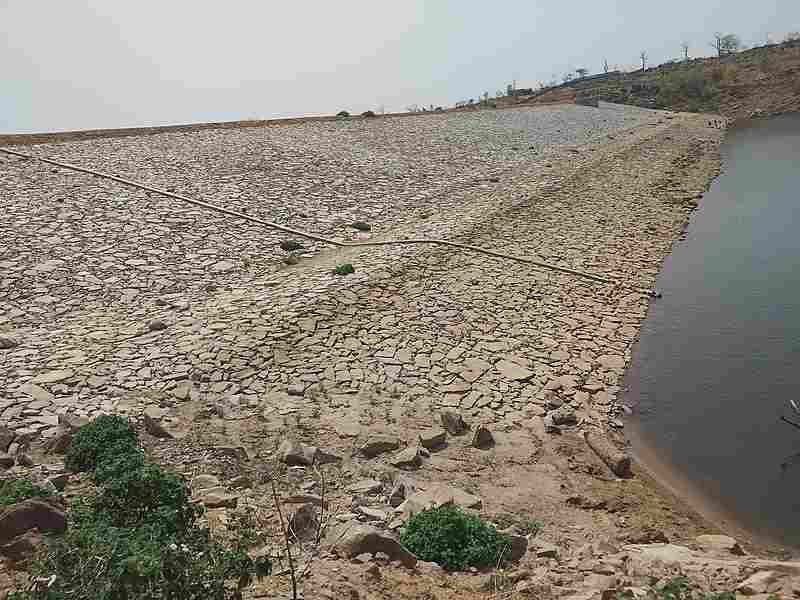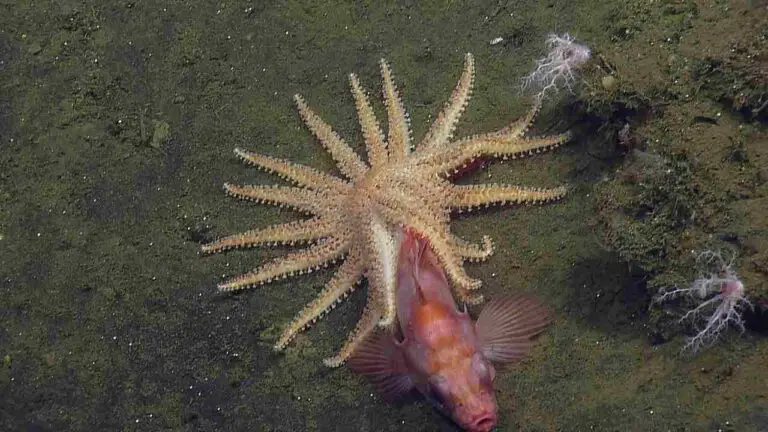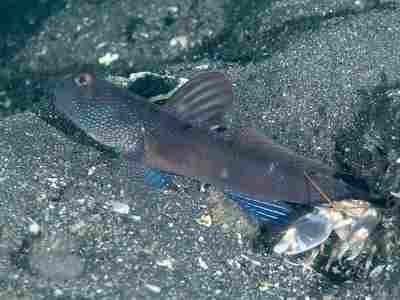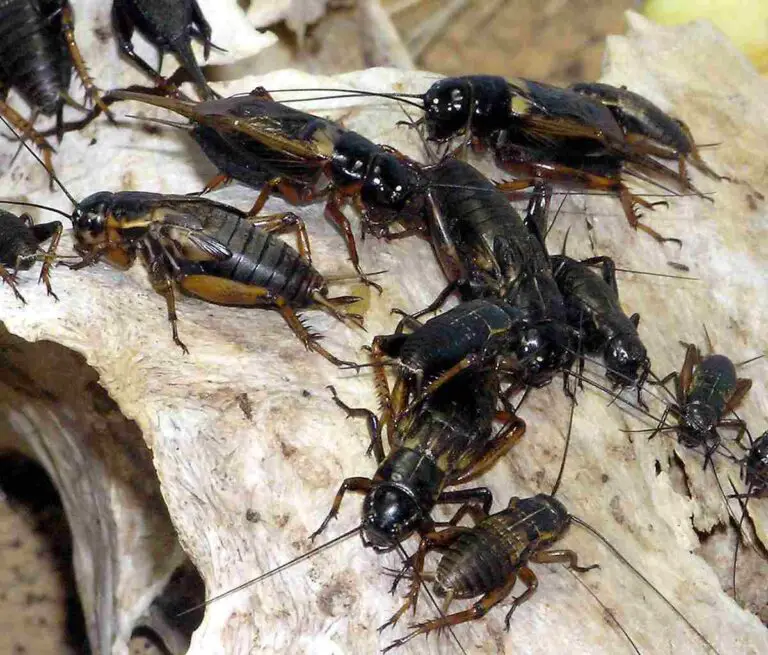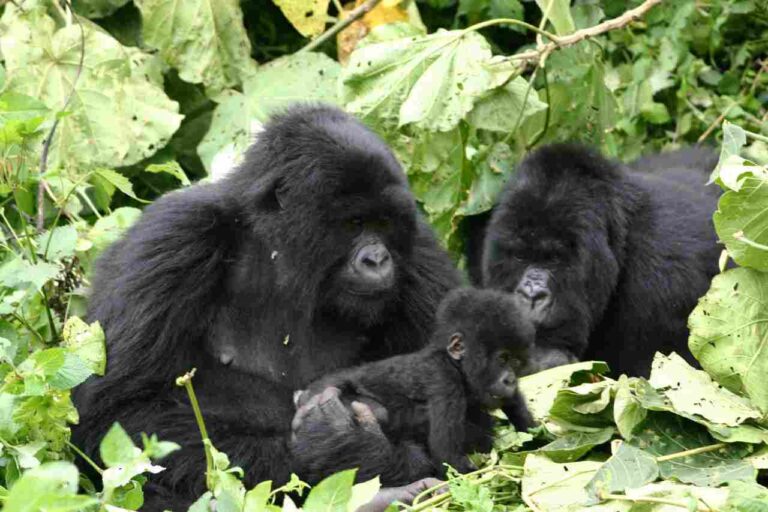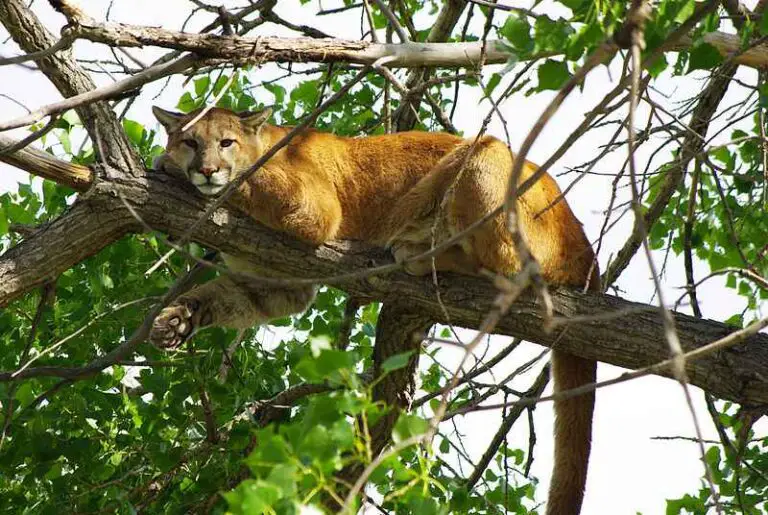15+ Human Impacts On The Savanna, and Areas of Importance
Human impacts on the savanna are; influx of invasive species, land cover losses due to overgrazing, biodiversity loss to poaching, habitat shrinkage by urban encroachment, increased desertification rate, climate change and regional warming, land conversion for agriculture, increased erosion due to soil exposure, changes to natural dire regimes, and altered predator-prey dynamics.
The savanna is important because of its role in habitat provision for flora and fauna, carbon sequestration, tourism and recreation, knowledge provision for scientific research, livelihood provision for local communities, and natural prevention of desertification.
The savanna ecosystem in Namibia is a distinctive ecozone that is inhabited by shrubs, trees, grasses, and a broad array of animal species.
This article discusses human impacts and the importance of the savanna ecosystem, as outlined below;
-Human Impacts On the Savanna
Human impacts on the savanna are; influx of invasive species, land cover losses due to overgrazing, biodiversity loss to poaching, habitat shrinkage by urban encroachment, increased desertification rate, climate change and regional warming, land conversion for agriculture, increased erosion due to soil exposure, changes to natural dire regimes, and altered predator-prey dynamics.
1). Influx of Invasive Species: One of Various Human Impacts On the Savanna Ecosystem
The influx of invasive species in savanna ecosystems is a pressing environmental issue, largely attributed to human activities. Human actions have significantly altered the natural balance of these ecosystems, leading to the introduction and spread of non-native species.
How Humans Facilitate the Influx of Invasive Species into the Savanna Ecosystem
Several key factors contribute to the influx of invasive species in savannas, including globalization and trade, agricultural practices, habitat modification, urbanization, recreational activities, climate change, fire suppression efforts, as well as lack of natural predators and competitors. These factors are discussed in the outline below;
The interconnectedness of the global economy has facilitated the movement of goods and people across borders. As a result, unintentional introductions of invasive species occur through trade. Plants, animals, and pathogens are often transported between continents, and some of these species find suitable conditions in the savanna ecosystem, where they can compete with native species.
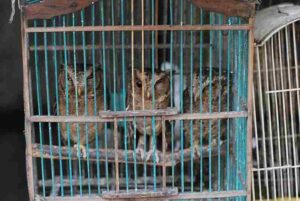
The expansion of agriculture often involves the introduction of non-native plants and animals. Crop cultivation and livestock grazing can create pathways for invasive species to establish themselves in the savanna. Agricultural activities may also lead to changes in soil composition and nutrient levels, favoring the growth of invasive plants over native vegetation.
The conversion of natural landscapes into urban areas alters the structure and composition of savanna ecosystems. Urban development introduces novel species, disrupts natural vegetation patterns, and creates new habitats that may favor invasive species. Urban centers act as hubs for the transportation of invasive species through human activities.
Changes in climate patterns influence the distribution and adaptations of species. As the climate in savannas shifts due to global warming, some invasive species may find more suitable conditions for growth and reproduction. This climate-induced migration can lead to the establishment of invasive species in areas where they were previously unable to thrive.
Humans often introduce species for recreational purposes, such as hunting, fishing, or ornamental gardening. These intentional introductions can have unintended consequences as the introduced species may escape captivity or cultivation and become invasive in the savanna ecosystem.
Savanna ecosystems are adapted to regular fire regimes, which play a crucial role in controlling vegetation and preventing the establishment of invasive species. Human efforts to suppress wildfires for agricultural or safety reasons can disrupt this natural balance, allowing invasive species to gain a foothold without the natural constraints of fire.
In their new environments, invasive species may lack natural predators or competitors that would keep their populations in check in their native habitats. This absence of ecological constraints allows invasive species to proliferate and outcompete native flora and fauna.
2). Land Cover Losses due to Overgrazing
Land cover losses due to overgrazing in the savanna ecosystem are a direct result of human activities, particularly unsustainable livestock management practices.
Overgrazing occurs when the vegetation is consumed by grazing animals at a rate that exceeds the natural capacity of the ecosystem to regenerate. This phenomenon has numerous environmental consequences, including largescale environmental degradation, loss of biodiversity, and alterations in the structure and composition of the savanna.
How Humans Induce Land Cover Losses in the Savanna Through Grazing
Several human-related factors contribute to overgrazing in the savanna, including uncontrolled livestock grazing, expansion of pastoralism, lack of rotational grazing schemes, inadequate infrastructure and policies, population pressure, climate variability, general lack of sustainable grazing practices.
Unregulated grazing of livestock, such as cattle, goats, and sheep, can lead to overgrazing in savanna ecosystems. When the number of grazing animals surpasses the carrying capacity of the land, vegetation is depleted faster than it can recover. This results in the loss of ground cover, exposing soil to erosion and degradation.
As human populations grow, the demand for livestock products, such as meat and milk, increases. To meet this demand, pastoralists may expand their grazing areas into new territories, putting additional pressure on the savanna ecosystem. The expansion of pastoral activities without proper land management exacerbates overgrazing.
Traditional land-use practices, such as continuous grazing without rotation, can contribute to overgrazing. Rotational grazing involves moving livestock to different areas periodically, allowing vegetation in previously grazed areas to recover. Without proper rotational grazing, the same areas are repeatedly subjected to grazing pressure, leading to land degradation.
In some regions, inadequate infrastructure and weak regulatory frameworks contribute to overgrazing. The lack of proper fencing or land tenure systems can lead to open access grazing, where multiple herders have access to the same land, intensifying grazing pressure and contributing to land cover losses.
Human population growth often leads to an increased demand for agricultural land. As a result, more land is converted into grazing areas to support the growing number of livestock. The expansion of human settlements and agriculture further fragments the savanna ecosystem, reducing available grazing land and increasing competition among livestock.
Changing climate patterns, which often feature extended periods of drought, can exacerbate overgrazing. During dry spells, natural vegetation may struggle to recover, making the ecosystem more vulnerable to the impacts of intensive grazing. Climate-induced changes in precipitation patterns can also affect the distribution and quality of forage in the savanna.
In general, the adoption of unsustainable grazing practices, such as continuous and uncontrolled grazing, contributes to land cover losses. Encouraging and implementing sustainable grazing practices, such as rest periods for pastures and rotational grazing, is therefore crucial for maintaining the health of the savanna ecosystem.
3). Biodiversity Loss to Poaching: One of Various Human Impacts On the Savanna Ecosystem
Biodiversity loss due to poaching is a significant and pressing issue in savanna ecosystems, driven primarily by human activities. Poaching, the illegal hunting or capturing of wildlife, poses a serious threat to the rich diversity of flora and fauna in these environments.
How Humans Deplete Savanna Biodiversity Through Poaching
There are multiple human-related factors that contribute to biodiversity loss through poaching in the savanna. They include; demand for bushmeat, illegal wildlife trade, lack of law enforcement, trophy hunting, conflict and instability, (unsustainable) cultural and traditional practices, and lack of (adequate) community engagement. These issues are discussed below;
The consumption of wildlife, commonly referred to as bushmeat, is a key driver of poaching in savanna ecosystems. Growing human populations, coupled with increased demand for protein sources, drive the illegal hunting of mammals, birds, and other animals for food. This unregulated hunting can lead to the depletion of key species, disrupting the balance of the ecosystem.
Global illegal wildlife trade is a lucrative industry, with demand for exotic pets, traditional medicines, and wildlife products driving poaching activities. Savanna ecosystems harbor a wide range of species with high market value, including elephants, rhinoceroses, and big cats. Poachers target these animals for their tusks, horns, and skins, contributing to the decline of these species and disrupting ecosystem dynamics.
Human activities, such as logging, agriculture, and infrastructure development, lead to habitat destruction and fragmentation. As natural habitats are reduced and fragmented, wildlife populations become more vulnerable to poaching. Animals in isolated pockets of habitat are easier targets for poachers, exacerbating the risk of biodiversity loss.
Inadequate law enforcement and anti-poaching measures contribute to the persistence of illegal hunting. Weak regulations, corruption, and limited resources for wildlife protection make it difficult to combat poaching effectively. Strengthening law enforcement and implementing stricter penalties for poaching offenses are essential for curbing biodiversity loss.
Trophy hunting, where individuals pay to hunt and kill specific species for recreation, can contribute to biodiversity loss. While regulated trophy hunting programs exist in some regions, poorly managed or illegal activities can lead to overharvesting of species and negatively impact the genetic diversity, species richness, and population dynamics of target populations.

Regions experiencing political instability and armed conflict often see an increase in poaching due to weakened governance and enforcement. The breakdown of law and order creates an environment conducive to illegal wildlife activities, leading to heightened threats to biodiversity in savanna ecosystems.
Some cultural or traditional practices involve the use of wildlife products, contributing to poaching. Beliefs in the medicinal properties of certain animal parts or the use of animal products in cultural ceremonies can drive the illegal hunting of specific species.
Engaging local communities in conservation efforts is crucial for combating poaching. In some cases, communities may turn to poaching as a means of livelihood due to economic challenges. Implementing community-based conservation strategies that provide alternative sources of income and involve local people in wildlife protection can help address this issue.
4). Habitat Shrinkage by Urban Encroachment
Habitat shrinkage due to urban encroachment is a significant and pervasive threat to savanna ecosystems, driven primarily by human expansion and development. As urban areas expand, they often encroach upon natural habitats, leading to the fragmentation and reduction of savanna ecosystems.
How Humans Cause Savanna Habitat Shrinkage
A number of human-related factors contribute to habitat shrinkage in the savanna, including population growth, urbanization, agricultural expansion, infrastructure development, industrialization, land use conversion for human residence, mining and exploration activities, lack of land-use planning and zoning, fire suppression and altered fire regimes, as well as invasive species introduction. Below is a compiled overview of these factors;
Rapid population growth and urbanization result in the expansion of cities and infrastructure into previously undeveloped areas, including savannas. As more people migrate to urban centers in search of opportunities, the demand for housing, commercial spaces, and infrastructure increases, leading to the conversion of savanna habitats into urban landscapes.
The conversion of savanna land for agriculture, including the cultivation of subsistence crops and establishment of plantations, contributes to habitat shrinkage. As agricultural activities expand, natural habitats are cleared to make way for farmland, disrupting the continuity of the savanna ecosystem.
The construction of roads, highways, and other infrastructure projects often involves clearing large tracts of land, leading to habitat fragmentation. Urban development in the form of roads and buildings creates barriers that impede the movement of wildlife, disrupt ecological processes, and reduce the availability of suitable habitats for native species.
Establishment of industrial zones and factories in or near savanna ecosystems can result in habitat loss and degradation. Environmental pollution from industrial activities further exacerbates the impact, negatively affecting both flora and fauna in the region.
The expansion of residential areas into savanna ecosystems directly contributes to habitat shrinkage. The construction of housing developments, resorts, and other human settlements results in the clearing of vegetation and alters the natural landscape, reducing the available habitat for native species.
Mining activities, including quarrying, excavation and extraction of natural resources, lead to significant habitat destruction. These activities not only remove vegetation but also disrupt soil structure and water flow, further degrading the quality of the remaining habitat in the savanna ecosystem.
Inadequate land-use planning and zoning regulations contribute to uncontrolled urban expansion. Without proper measures in place to guide development and protect natural areas, urban encroachment can occur without consideration for the ecological consequences on savanna habitats.
Human efforts to suppress wildfires, either for safety or agricultural reasons, can alter natural fire regimes in savanna ecosystems. The absence of regular fires disrupts the ecological processes that maintain savanna habitats, leading to changes in vegetation structure and making the ecosystem more susceptible to urban encroachment.
Lastly, human activities associated with urban development, such as the introduction of non-native plants for landscaping, can lead to the establishment of invasive flora species. These invasive species can outcompete native vegetation, further reducing the quality and extent of savanna habitats.
5). Increased Desertification Rate: One of Various Human Impacts On the Savanna Ecosystem
The increased rate of desertification in the savanna ecosystem is largely attributed to human activities that contribute to land degradation and alter the natural balance of these environments.
Desertification is a process characterized by the gradual transformation of fertile land into arid and unproductive desert-like terrain.
How Humans Induce Desertification in Savanna Regions
Several human-related factors contribute to the heightened desertification rate in the savanna, including; regional deforestation, overgrazing, agricultural practices, water mismanagement, climate change and global warming, mining activities, urbanization, lack of sustainable land management practices, and invasive species. More details are provided below;
The removal of trees, often for timber, fuelwood, and agricultural expansion, is a significant driver of desertification in the savanna. Although they are not as prominent in savannas as in forest ecosystems, trees play a crucial role in maintaining savanna soil structure, moisture retention, and preventing erosion. Their removal disrupts these functions, leading to increased vulnerability to desertification.
Uncontrolled grazing by livestock can exacerbate desertification in the savanna. When grazing pressure exceeds the land's carrying capacity, vegetation is overconsumed, leaving the soil exposed to erosion. Overgrazing contributes to the loss of plant cover, decreases soil fertility, and increases the risk of land degradation.
Unsustainable agricultural practices, such as intensive monoculture, excessive use of chemical fertilizers, and poor water management, contribute to soil degradation in the savanna. The expansion of agricultural activities without proper conservation measures accelerates the depletion of soil nutrients and increases susceptibility to desertification.
Inefficient water conservation and management practices, including over-extraction of groundwater, improper irrigation techniques, and the construction of dams that negatively alter natural water flow, can contribute to desertification. Changes in water availability impact the vegetation in the savanna, making it more susceptible to aridification.
Human-induced climate change and global warming contribute to shifts in precipitation patterns and increased temperatures, creating conditions conducive to desertification. Changes in climate can lead to prolonged droughts, reduced water availability, and increased evaporation rates, all of which contribute to the expansion of arid areas within the savanna.
Extractive industries, such as mining and quarrying, contribute to desertification by disrupting soil structure, removing vegetation, and generating pollution. These activities leave behind barren landscapes that are highly susceptible to erosion and degradation, accelerating the process of desertification.
The expansion of urban areas and infrastructure development in the savanna often involves extensive land clearing, which contributes to habitat loss and fragmentation. This land transformation reduces the natural cover, making the soil more prone to erosion and desertification.
The absence of sustainable land management practices, such as agroforestry, contour plowing, and soil conservation techniques, contributes to increased desertification. Implementing these practices helps maintain soil fertility, prevent erosion, and enhance the resilience of the savanna ecosystem.
Introduction and spread of invasive plant species in the savanna can alter the natural vegetation structure, compete with native plants for resources, and increase the risk of desertification. Invasive species often have characteristics that make them well-suited to thrive in degraded and arid conditions.
6). Climate Change and Regional Warming
Human activities contribute significantly to climate change and regional warming, impacting the delicate balance of ecosystems, including the savanna.
The savanna, with its distinctive climate and biodiversity, is particularly vulnerable to the consequences of global warming. This section highlights some ways in which humans contribute to climate change and regional warming in the savanna ecosystem.
How Humans Facilitate Climate Change and Global Warming in the Savanna Ecosystem
Human-related contributions to climate change and global warming in the savanna ecosystem can be outlined to include; greenhouse gas emissions, deforestation, agricultural practices, biomass burning, infrastructure development, and regional water management issues.
The burning of fossil fuels, such as coal, petroleum and natural gas for energy, releases large amounts of greenhouse gases (GHGs) into the atmosphere. These gases, including carbon dioxide (CO2), methane (CH4), and nitrous oxide (N2O), trap heat and contribute to the warming of the Earth's surface, leading to climate change. Industrial activities, transportation, and deforestation are major contributors to greenhouse gas emissions.
Deforestation and land use changes in and around the savanna release stored carbon into the atmosphere and reduce the natural capacity of the ecosystem to absorb carbon dioxide. As trees are cleared for agriculture, urbanization, and other purposes, the carbon stored in their biomass is released, contributing to elevated atmospheric CO2 levels and regional warming.
Intensive agricultural practices, including the use of synthetic fertilizers and the conversion of natural vegetation into cropland, release nitrous oxide—a potent greenhouse gas. Additionally, certain agricultural activities contribute to land degradation, reducing the savanna's resilience to climate change and exacerbating regional warming.
Human-initiated fires, often for agricultural purposes and land clearance, release large amounts of carbon dioxide and other pollutants into the atmosphere. In the savanna, controlled burns are sometimes used for agricultural practices, but uncontrolled or excessive burning can lead to increased emissions, air pollution, and changes in regional climate patterns.
The expansion of urban areas and infrastructure development alters the landscape and contributes to the urban heat island effect. Dark surfaces like asphalt and concrete absorb more heat, leading to increased temperatures in built-up areas. This localized warming can influence regional climate patterns, affecting the temperature and precipitation regimes in the surrounding savanna.
Changes in water management practices, such as the construction of dams and alterations to natural water flow trends, can influence the hydrological cycle in the savanna. Changes in precipitation patterns and water availability contribute to shifts in vegetation and land cover, impacting the regional climate.
Industrial activities release pollutants into the air, including particulate matter and gases that contribute to regional warming. The release of industrial pollutants can have direct and indirect effects on the climate, altering atmospheric composition and influencing temperature patterns in the savanna region.
Poor waste management practices, including the improper disposal of organic waste, contribute to methane emissions in landfills. Methane is a potent greenhouse gas, and its release into the atmosphere enhances the greenhouse effect, contributing to regional warming.
7). Land Conversion for Agriculture: One of Various Human Impacts On the Savanna Ecosystem
Land conversion for agriculture is a widespread human-induced phenomenon that significantly impacts the savanna ecosystem.
As populations grow and demand for food increases, the conversion of natural landscapes into agricultural land intensifies, leading to a range of environmental consequences. This section discussed some ways in which humans contribute to land conversion for agriculture in the savanna ecosystem.
How Humans Contribute to Land Conversion for Agriculture in the Savanna Ecosystem
Some concepts that link human agricultural activities to land conversion in the savanna ecosystem, are; expansion of cropland, slash-and-burn agriculture, livestock grazing and pasture expansion, monoculture and intensive farming, infrastructure development, large-scale plantations, land tenure issues, land grabbing, technological advances and mechanization, government policies and subsidies, as well as population growth and food demand. These are discussed below;
The growing global demand for food, biofuels, and other agricultural products drives the expansion of cropland into savanna ecosystems. Forests and grasslands are often cleared to make way for large-scale agricultural activities, leading to the loss of natural habitat and biodiversity.
Traditional agricultural practices, such as slash-and-burn agriculture, are common in some savanna regions. This method involves cutting and burning vegetation to clear land for cultivation. While it provides short-term fertility to the soil, repeated use can lead to soil degradation and loss of biodiversity.
The need for pasture land to support livestock, such as cattle, goats, and sheep, contributes to land conversion in the savanna. Large areas of natural vegetation are cleared to create pasture for grazing animals, impacting the structure and composition of the ecosystem.
Intensive agricultural practices, including monoculture (cultivating a single crop over large areas), often lead to the conversion of diverse savanna ecosystems into monocropped landscapes. This simplification of vegetation can result in the loss of ecological diversity and resilience.
Infrastructure projects, such as roads, highways, and urban expansion, often result in the conversion of savanna land. These developments fragment natural habitats, disrupt wildlife corridors, and contribute to habitat loss, altering the dynamics of the savanna ecosystem.
The establishment of large-scale plantations for crops like oil palm, soy, and rubber contributes to land conversion in the savanna. These monoculture plantations replace diverse native vegetation with single-crop landscapes, impacting biodiversity and ecosystem services.
Land tenure issues and land grabbing can lead to the conversion of savanna land for agriculture. In some cases, powerful entities or individuals acquire land for agricultural purposes, displacing local communities and causing extensive changes to the natural landscape.
Technological advancements in agriculture, including the use of heavy machinery and mechanized farming techniques, enable the conversion of larger areas of land more efficiently. While these technologies increase productivity, they can also result in widespread habitat destruction in the savanna.
Government policies, subsidies, and incentives that promote agricultural expansion can influence land-use decisions. In some cases, policies that encourage the conversion of natural habitats into agricultural land contribute to environmental degradation in the savanna.
The increasing global population and growing demand for food put pressure on existing agricultural lands, driving the need for expansion into new areas, including savanna ecosystems. Meeting the demands for food production often involves converting natural landscapes into cultivated fields.
8). Increased Erosion due to Soil Exposure
Human activities play a significant role in increasing erosion due to soil exposure in the savanna ecosystem. Erosion occurs when the protective vegetation cover is removed, leaving the soil vulnerable to the erosive forces of wind and water. The subsection below reveals some ways in which humans contribute to increased erosion in the savanna.
Human Contribution to Soil Erosion in the Savanna Ecosystem
A detailed evaluation of the role played by humans in soil erosion, within savanna regions, must include references to factors like; regional devegetation, agricultural expansion, overgrazing, mining and resource-extraction, construction and urbanization, fire suppression efforts, climate change-induced extreme weather events and natural hazards, as well as invasive species and habitat alteration.
One of the primary contributors to increased erosion in the savanna is devegetation. The removal of trees, grasses and other savanna vegetation disrupts the natural protection against erosion. Tree roots help bind the soil together, and the canopy acts as a barrier to raindrops, preventing soil detachment. Without this protective cover, rainfall can directly hit the soil, leading to increased erosion.
Clearing land for agriculture, especially through methods like slash-and-burn, exposes the soil to erosion. The removal of natural vegetation and the disruption of the soil structure make it more susceptible to the effects of agents of erosion like water and wind. Intensive agricultural practices, such as monoculture and excessive tilling, further exacerbate soil exposure and erosion.
Uncontrolled grazing by livestock, such as cattle and sheep, can lead to overgrazing and the removal of vegetation cover. The trampling of soil by hooves, coupled with the removal of plants, reduces the soil's ability to resist erosion. Overgrazed areas are more prone to soil erosion, especially during heavy rainfall.
Mining activities, including quarrying and extraction of minerals, often involve removing large amounts of soil and vegetation. This disruption to the natural landscape exposes the underlying soil to erosion by wind and water. The altered topography can lead to increased runoff and sedimentation in nearby water bodies.
Urban expansion and construction activities in the savanna contribute to soil exposure. The clearing of land for infrastructure development removes the protective vegetation cover, making the soil susceptible to erosion. Impermeable surfaces like roads and buildings can increase runoff, further accelerating erosion.
The construction of roads through the savanna can lead to increased soil exposure and erosion. Road building often involves cutting through natural landscapes, creating slopes that are prone to erosion. Inadequate planning and improper construction practices can exacerbate the impact on soil stability.
While fire suppression efforts are aimed at preventing uncontrolled wildfires, they can have unintended consequences for soil stability. In savanna ecosystems adapted to periodic fires, the suppression of fires can lead to the accumulation of dry vegetation, making the soil more vulnerable to erosion during heavy rainfall.
Changes in climate patterns, including increased frequency and intensity of extreme weather events, can contribute to soil erosion. Intense rainfall events can lead to flash floods and surface runoff, carrying away exposed soil. Climate change exacerbates the vulnerability of the savanna ecosystem to erosion.
The introduction and spread of invasive plant species can alter the natural vegetation cover in the savanna. Invasive species may not provide the same level of soil protection as native vegetation, increasing the risk of erosion. Habitat alterations, such as changes in vegetation patterns, also contribute to soil exposure and erosion.
9). Changes to Natural Fire Regimes: One of Various Human Impacts On the Savanna Ecosystem
Human activities can significantly alter the natural fire regimes in the savanna ecosystem, disrupting the typical abiotic conditions that many species have adapted to over time. The natural fire regimes in savannas play a crucial role in maintaining ecosystem health, influencing vegetation structure, nutrient cycling, and biodiversity.
Some ways in which humans contribute to changes in natural fire regimes in the savanna are discussed in this section.
Ways in Which Humans Contribute to Changes in Natural Fire Regimes in the Savanna
Efforts at fire suppression, land use change, urbanization, introduction of invasive species, agricultural practices, livestock grazing, fire for land management; climate change, unregulated tourism and recreation, lack of indigenous fire management practices, are all human-related factors that alter the natural fire regimes in savanna regions. Below are more details;
Human efforts to suppress wildfires, often for the protection of human settlements, agriculture, or infrastructure, can disrupt the natural fire regime in the savanna. While fire suppression can prevent uncontrolled fires, it also leads to the accumulation of dry vegetation, increasing the risk of more intense and destructive fires when they do occur.
The expansion of agricultural activities and urban development often involves clearing land and altering the natural landscape. These changes can disrupt historical fire patterns and create new firebreaks, influencing the frequency and intensity of fires in the savanna.
Invasive plant species can alter the fuel structure and compositional characteristics of the savanna ecosystem. Some invasive species may be more flammable than native vegetation, leading to changes in fire behavior and potentially more frequent or intense fires. These alterations can impact the natural fire regime.
Certain agricultural practices, such as the use of fire for land clearing or pasture management, can introduce fire at times and intensities that differ from the natural fire regime. Uncontrolled or poorly managed agricultural fires can have cascading effects on the savanna ecosystem.
Overgrazing by livestock can influence vegetation structure, reducing fuel loads and potentially altering the natural fire regime. Grazing can lead to the removal of fine fuels that are essential for carrying fires, affecting the frequency and intensity of fires in the savanna.
Human-initiated fires for land management purposes, such as prescribed burns, are commonly used to reduce fuel loads, control invasive species, and promote ecosystem health. However, the timing, frequency, and intensity of these fires can influence the natural fire regime and impact the structure of the savanna ecosystem.
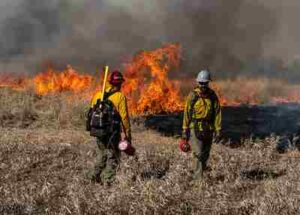
Human-induced climate change is altering precipitation patterns, temperature regimes, and overall climatic conditions in the savanna. These changes can influence the occurrence, frequency, and intensity of fires, disrupting the natural fire regime that many species have adapted to over time.
Tourism and recreational activities in savanna ecosystems can contribute to changes in the natural fire regime. Unregulated campfires and the accidental ignition of fires by visitors can lead to unpredictable fire events that deviate from the historical fire patterns.
In many regions, traditional Indigenous fire management practices have been disrupted. Indigenous communities have historically used controlled burns to shape the landscape, manage vegetation, and promote biodiversity. The suppression of these practices can contribute to changes in the natural fire regime.
10). Altered Predator-Prey Dynamics
Humans can significantly influence predator-prey dynamics in the savanna ecosystem through various activities that impact both predator and prey populations. These alterations can have cascading effects on the entire ecosystem.
How Humans Alter the Natural Predator-Prey Dynamics of the Savanna Ecosystem
Some ways in which humans contribute to altered predator-prey dynamics in the savanna are; poaching, overharvesting, introduction of exotic species, habitat fragmentation, livestock grazing, climate change, fire suppression efforts, introduction of diseases, trophy hunting, land use change, selective breeding, and efforts to mitigate human-wildlife conflict.
Illegal hunting and overharvesting by humans can lead to declines in prey populations, affecting the availability of food for predators. Large mammals, such as elephants, rhinoceroses, and ungulates, are often targeted, disrupting natural predator-prey relationships.
The introduction of non-native species, either intentionally or accidentally, can disrupt predation dynamics in the savanna. Invasive species may outcompete or prey upon native species, affecting the balance between predators and their traditional prey.
Anthropogenic factors like urbanization, agriculture, and infrastructure development, can fragment natural habitats in the savanna. Fragmentation alters the distribution of both predators and prey, affecting their interactions and potentially leading to imbalances in predator-prey dynamics.
Unregulated grazing by domestic livestock can impact both predator and prey populations. Overgrazing can reduce the availability of natural vegetation for herbivores, affecting their abundance and, subsequently, the prey base for predators.
Human-induced climate change alters temperature and precipitation patterns, impacting vegetation growth and availability of water sources. Changes in climate can affect the distribution and abundance of both predators and prey, influencing their interactions and dynamics in the savanna ecosystem.
Efforts to suppress wildfires, whether for environmental reasons or to protect human infrastructure, can lead to changes in vegetation structure. Altered vegetation can affect the habitat and foraging opportunities for both predators and prey, influencing their dynamics in the savanna.
Humans can inadvertently introduce diseases to both predator and prey populations, posing a threat to the savanna ecosystem as a whole. Diseases such as those carried by domestic animals or invasive species can impact wildlife health, potentially leading to changes in predator-prey interactions.
Trophy hunting, where individuals pay to hunt and kill specific species for recreation, can also disrupt predator-prey dynamics. Targeted hunting of large predators for trophies can lead to imbalances in the savanna food chain by removing key predators and impacting their natural prey.
Changes in land use, such as the conversion of natural habitats for agriculture or urban development, can impact the availability of suitable habitat for both predators and prey. This can lead to altered spatial distributions and interactions between predator and prey species.
Selective breeding practices, whether for domestic animals or certain game species, can alter the natural characteristics and behaviors of prey species. These changes can have cascading effects on the dynamics between predators and their prey in the savanna.
Lastly, efforts to mitigate conflicts between humans and wildlife, such as the removal of predators perceived as threats or the implementation of fencing, can disrupt natural predator-prey dynamics. These measures may alter the behavior and distribution of both predators and prey.
-Why is the Savanna Important?
The savanna is important because of its role in habitat provision for flora and fauna, carbon sequestration, tourism and recreation, knowledge provision for scientific research, livelihood provision for local communities, and natural prevention of desertification.
1). Habitat Provision for Diverse Flora and Fauna: A Reason Why the Savanna is Important
The savanna ecosystem is of paramount importance due to its role in providing habitat for diverse flora and fauna. This unique biome, characterized by a mix of grasslands and scattered trees, supports a rich array of plant and animal species, contributing to global biodiversity. This section evaluates why the savanna is important for habitat provision.
Why the Savanna Ecosystem is Important for Habitat Provision
In general, savannas serve as biodiversity hotspots, critical habitats for large mammals; while facilitating distinctive adaptations to seasonal changes, providing stopover sites for migratory birds, pollinator habitats, and contributing to microbial diversity, carbon storage and sequestration, ecological resilience, cultural and recreational value.
Savannas are renowned for their high biodiversity, hosting a wide variety of plants, mammals, birds, insects, and other organisms. The mix of grasses and trees creates a mosaic of habitats that support different species with various ecological niches. This diversity is essential for the overall health and resilience of the global ecosystem.
Also, savannas are home to some of the world's most iconic and charismatic large mammals, including elephants, lions, giraffes, zebras, and rhinoceroses. These species depend on the open landscapes of the savanna for feeding, breeding, and migration. The savanna's vast expanses provide the space and resources needed to sustain healthy populations of these keystone species.
The seasonal nature of savannas, characterized by alternating wet and dry seasons, has shaped the adaptations of flora and fauna. Many species have evolved to cope with these environmental variations, exhibiting behaviors such as migration, hibernation, or changes in reproductive cycles. The savanna's diverse habitats allow for a range of adaptive strategies.
Plant species in the savanna have developed unique adaptations to survive in the distinct climate and soil conditions. Some trees, such as acacias, have evolved thorns to deter herbivores, while grasses are often adapted to fire regimes. The variety of vegetation types in the savanna creates microhabitats for different plant species with specialized adaptations.
Savannas serve as important stopover points for migratory birds. During their long journeys, birds find essential resources, such as food and shelter, in the savanna. This makes these ecosystems crucial for maintaining global bird populations and facilitating the ecological connectivity of different regions.
The diverse flora of the savanna provides crucial habitats for pollinators such as bees, butterflies, and birds. Many plants in the savanna rely on these pollinators for reproduction. The presence of flowering plants and their pollinators contributes to the overall health of the ecosystem and supports savanna food webs.
The soil in savanna ecosystems harbors a rich diversity of microorganisms, including bacteria and fungi. These microorganisms play essential roles in nutrient recycling, decomposition, and maintaining soil health. The intricate relationships between soil microbes and plants contribute to the overall functioning of the ecosystem.
Savannas play a role in mitigating climate change by storing and sequestering carbon. The vegetation in savannas, including grasses and trees, captures and stores carbon dioxide from the atmosphere. Preserving savanna habitats helps maintain carbon cycle dynamics, contributing to climate stability.
The biodiversity within the savanna enhances the ecosystem's resilience to environmental changes. Diverse plant and animal communities provide redundancy, ensuring that even if some species decline, others can step in to fulfill ecological roles. This resilience is crucial for the adaptability and sustainability of the ecosystem.
Savannas often have cultural significance for local communities, serving as landscapes for traditional practices, rituals, and storytelling. Additionally, these ecosystems attract tourists and nature enthusiasts who seek to experience the unique wildlife and landscapes, contributing to the economies of many regions.
2). Effective Sites of Carbon Sequestration
The savanna ecosystem plays a crucial role in carbon sequestration, making it an effective site for mitigating climate change. Carbon sequestration refers to the capture and long-term storage of carbon dioxide (CO2) from the atmosphere, preventing its release and contributing to the reduction of greenhouse gas concentrations.
This section discusses some key reasons why savannas are important for effective carbon sequestration.
Why Savannas are Important for Carbon Sequestration
Concepts that highlight the role of savannas in carbon sequestration include; tree biomass, soil organic carbon, root systems and below-ground biomass, fire and carbon dynamics, diversity if vegetation types, resilience to climate variability, potential for afforestation and reforestation, role in global carbon balance, economic and conservation co-benefits, and global significance in climate change mitigation.
Savannas are characterized by a mix of grasses and scattered trees, and these trees contribute significantly to carbon sequestration. Trees store carbon in their biomass through the process of photosynthesis, capturing atmospheric CO2 and converting it into organic carbon compounds. The biomass of savanna trees, particularly in their above-ground and below-ground components, serves as a substantial reservoir for sequestered carbon.
Soils in the savanna ecosystem contain substantial amounts of organic carbon, mainly derived from the decomposition of plant material. The cycle of plant growth, death, and biodegradation contributes to the accumulation of organic carbon in the soil. This soil organic carbon plays a critical role in carbon sequestration, as it can persist in the soil for extended periods, acting as a long-term carbon sink.
The extensive root systems of savanna vegetation, including both grasses and trees, contribute to below-ground biomass. Below-ground biomass plays a vital role in sequestering carbon in the soil. The intricate network of roots helps stabilize soil structure and enhances the retention of carbon in the form of organic matter.
Savannas are adapted to periodic fires, and these fires influence carbon dynamics in the ecosystem. While fires release carbon stored in vegetation, they also stimulate new growth, restarting the carbon sequestration process. The balance between fire and regrowth in savannas contributes to the net sequestration of carbon over time.
The diversity of vegetation types in the savanna, ranging from grasslands to woodlands, contributes to varied carbon sequestration strategies. Different plant species have unique characteristics, growth rates, and strategies for storing carbon, enhancing the overall efficiency of carbon sequestration in the ecosystem.
Savannas often exhibit resilience to climate variability, including periods of drought and rainfall. This resilience allows vegetation, especially trees, to withstand environmental stressors and continue sequestering carbon. Resilient ecosystems are better equipped to maintain their carbon sequestration potential in the face of changing climate conditions.
Also, savanna regions offer opportunities for afforestation (planting trees in areas where they did not previously exist) and reforestation (replanting trees in areas that were previously forested). Strategic afforestation and reforestation efforts can restore soil and enhance carbon sequestration by increasing the overall tree cover in the savanna.
Savannas contribute significantly to the global carbon balance. While tropical rainforests are often recognized for their carbon sequestration capacity, savannas, especially those with a substantial tree component, play a crucial role in balancing the carbon cycle and mitigating the impacts of climate change.
Carbon sequestration in savannas provides not only environmental benefits but also economic and conservation co-benefits. It can support sustainable land management practices, promote biodiversity conservation, and offer opportunities for carbon offset projects that generate revenue while contributing to climate goals.
Recognizing the importance of savannas as effective sites for carbon sequestration is crucial at the global level. Integrating savanna conservation and sustainable management into climate mitigation strategies contributes to achieving international climate goals and maintaining a balanced global carbon budget.
3). Tourism and Recreation Benefits: Reasons Why the Savanna is Important
Tourism and recreation in the savanna offer a range of benefits, making these ecosystems not only important for biodiversity conservation but also as valuable destinations for travelers and nature enthusiasts. This section reveals some reasons why tourism and recreation in the savanna are significant.
Aspects of the Tourism Importance of Savannas
The tourism importance of the savanna ecosystem can be attributed to factors like its breathtaking scenery, iconic wildlife viewing, birdwatching opportunities, cultural experiences, adventure tourism, education value, economic benefits, as well as its links to conservation funding schemes, awareness programs, promotion of sustainable practices; recreational opportunities, global appreciation and advocacy.
Savannas are known for their stunning landscapes, featuring expansive grasslands, scattered trees, and a diverse array of wildlife. The picturesque scenery of the savanna attracts tourists seeking a connection with nature and a chance to experience the beauty of open, unspoiled landscapes.
The savanna is home to a wide variety of iconic and charismatic wildlife species, including elephants, lions, giraffes, zebras, and many others. Wildlife enthusiasts and photographers are drawn to the savanna for unparalleled opportunities to observe these animals in their natural habitats, contributing to a memorable and enriching experience.

Savannas are often havens for birdwatchers, offering diverse avian species that inhabit the open landscapes. Birdwatching enthusiasts can spot a variety of raptors, ground-dwelling birds, and migratory species, making the savanna a sought-after destination for birding activities.
Many savanna regions have rich cultural traditions and heritage associated with local communities. Tourists have the opportunity to engage in cultural experiences, including interactions with indigenous communities, traditional ceremonies, and learning about the coexistence between people and wildlife.
The savanna provides a backdrop for adventure tourism activities, such as guided safaris, trekking, and hot air balloon rides. Adventure seekers can explore the vast and diverse landscapes, adding an element of excitement to their travel experience.
Savanna tourism offers educational opportunities for visitors to learn about ecosystems, biodiversity, and the intricate relationships between different species. Guided tours and interpretive programs provide insights into the complex and interconnected web of life in the savanna.
Tourism in the savanna generates economic benefits for local communities and national economies. Revenue from tourism contributes to livelihoods, job creation, and the development of local infrastructure. Well-managed tourism can serve as a sustainable source of income for regions hosting savanna ecosystems.
Sustainable tourism practices often include conservation fees and initiatives aimed at preserving the natural environment. Entrance fees, guided tours, and other tourism-related revenue streams can be directed towards conservation efforts, helping protect the savanna's biodiversity and ecosystems.
Tourists who visit the savanna often gain a heightened awareness of wildlife conservation issues. Exposure to the beauty and vulnerability of the ecosystem fosters a sense of responsibility, prompting visitors to support conservation initiatives and advocate for the protection of natural habitats.
The growing demand for sustainable and eco-friendly tourism encourages the implementation of responsible practices in the savanna. Eco-lodges, conservation-minded tour operators, and community-based tourism initiatives contribute to minimizing the environmental impact of tourism and promoting sustainable development.
Beyond wildlife observation, the savanna offers recreational activities such as hiking, camping, and nature walks. These activities allow visitors to immerse themselves in the natural surroundings, fostering a deeper connection with the environment.
Tourism in the savanna can foster a global appreciation for these ecosystems. Visitors from around the world share their experiences and appreciation, contributing to a broader understanding of the importance of savannas and the need for their conservation on a global scale.
4). Knowledge Base for Scientific Research
The savanna ecosystem serves as a valuable knowledge base for scientific research, offering researchers a unique and dynamic environment to study various ecological processes, species interactions, and the impacts of environmental changes.
Some prominent reasons why the savanna is important as a knowledge base for scientific research, are referenced below.
Role of the Savanna Ecosystem as a Scientific Knowledge Base
Scientific benefits of the savanna as a source of knowledge can be analyzed within contexts like; biodiversity occurrence, species coexistence mechanisms, large mammal ecology, fire ecology, carbon sequestration and climate change, sustainable land management, soil and nutrient dynamics, role in global ecosystem dynamics, innovations in conservation technologies, human-wildlife interactions, resilience to climate change, and global conservation priorities.
Savannas are renowned for their high biodiversity, hosting a diverse array of plant and animal species. This richness makes savannas excellent sites for biodiversity research, allowing scientists to study species interactions, distribution patterns, and the factors influencing biodiversity in a complex ecosystem.
The coexistence of numerous plant and animal species in the savanna provides an opportunity to study the mechanisms that allow different species to share the same habitat. Understanding how species adapt and coexist in the savanna contributes valuable insights to ecological theory and conservation strategies.
Savannas are home to large mammal species such as elephants, lions, giraffes, and zebras. Research in the savanna allows scientists to study the behavior, ecology, and population dynamics of these iconic species, contributing to wildlife conservation efforts and the development of effective management strategies.
The savanna's natural fire regimes play a crucial role in shaping the ecosystem. Researchers study the frequency, intensity, and ecological impacts of fires in the savanna, providing insights into fire ecology, plant adaptation, and the effects of changing fire patterns due to human activities or climate change.
Savannas are effective sites for studying carbon sequestration, particularly the role of trees in capturing and storing carbon. Research in savannas contributes to our understanding of how these ecosystems mitigate climate change by sequestering carbon and the potential impacts of disturbances on carbon dynamics.
Scientific research in the savanna informs sustainable land management practices. Studies on grazing patterns, land-use change, and the impact of human activities provide valuable data for developing conservation strategies that balance the needs of local communities with the preservation of biodiversity.
Savannas exhibit unique soil and nutrient dynamics influenced by vegetation patterns, fire, and climate. Researchers study these dynamics to understand nutrient cycling, soil fertility, and the impact of land management practices. Such knowledge contributes to sustainable agriculture and land-use planning.
Savannas play a vital role in global ecosystem processes, influencing climate patterns, nutrient cycling, and biodiversity. Research in savannas contributes to a broader understanding of these global processes and their interconnectedness with other ecosystems.
Researchers in savannas often use cutting-edge technologies such as satellite imagery, remote sensing, and GIS (Geographic Information System) mapping to monitor changes in land cover, wildlife movements, and ecosystem health. These innovations contribute to the development of effective conservation and management strategies.
Human-wildlife interactions in savannas, including conflicts and coexistence, provide a valuable context for social and ecological research. Understanding the factors influencing these interactions contributes to the development of strategies that promote harmonious relationships between humans and wildlife.
Savannas, with their adaptability to variable climate conditions, serve as natural laboratories for studying ecosystem resilience to climate change. Research in savannas helps identify key adaptive mechanisms that can inform broader strategies for enhancing ecosystem resilience in the face of global climate change.
The insights gained from scientific research in savannas contribute to the identification of global conservation priorities. Savannas are often focal points for conservation efforts due to their ecological significance, and research findings influence conservation policies and initiatives worldwide.
5). Livelihood Provision for Local Communities: A Reason Why the Savanna is Important
The savanna ecosystem has a crucial role to play in providing livelihood opportunities for local communities living in and around these regions. The significance of the savanna for livelihood provision stems from the diverse resources it offers, supporting the economic, social, and cultural well-being of the people who depend on it.
Here, we discuss some reasons why the savanna is important for livelihood provision.
Overview of the Savanna as a Source of Livelihood
The role of savanna ecosystems in supporting livelihoods can be analyzed with reference to concepts like agricultural and livestock grazing, traditional medicine and cultural practices, harvesting non-timber forest products (NTFPs), tourism and ecotourism opportunities, craftsmanship and artisanal skills, hunting and fishing, water provision and agriculture, employment in ecosystem conservation schemes, honey production and bee keeping, cultural and educational tourism, and community-based natural resource management.
Savannas often support agricultural activities and livestock grazing, providing a source of sustenance and income for local communities. The fertile soils and availability of water in some savanna regions make them suitable for cultivation of crops and pastures for livestock.
Local communities in savanna regions often rely on the diverse plant and animal species for traditional medicine and cultural practices. The knowledge of medicinal plants and their uses is passed down through generations, contributing to community health and well-being.
Many savanna ecosystems are rich in non-timber forest products (NTFPs) such as fruits, nuts, resins, and medicinal plants. Harvesting and selling these products provide a direct source of income for local communities, contributing to their economic resilience.
The presence of unique wildlife, landscapes, and cultural heritage in savannas attracts tourists. Local communities often engage in tourism-related activities, providing services such as guided tours, accommodation, and cultural experiences. This tourism income can become a significant source of livelihood.
Local communities in savanna regions often engage in craftsmanship and artisanal activities, creating traditional arts and crafts. These products, ranging from beadwork to sculptures, contribute to local economies and provide an outlet for the expression of cultural identity.
In some regions, sustainable hunting and fishing practices are part of the traditional livelihoods of local communities. People rely on the abundance of wildlife and fish in savannas for subsistence, and surplus can be sold or traded.
Savannas often serve as water catchment areas, providing a crucial resource for agriculture and domestic use. Access to water supports crop cultivation, livestock rearing, and overall food security for local communities.
Conservation projects and ecotourism initiatives in savannas create employment opportunities for local residents. Community-based conservation efforts often involve training community members as guides, rangers, or in other roles, contributing to both livelihoods and conservation goals.
Savannas support diverse plant species that are important for honey production. Beekeeping is a traditional livelihood in many savanna regions, providing a sustainable source of income through the sale of honey and other bee-related products.
Local communities in savanna regions may offer cultural and educational experiences to tourists, showcasing traditional practices, dances, and rituals. This not only contributes to the preservation of cultural heritage but also generates income for community members involved in these activities.
Engaging local communities in the management of natural resources, such as wildlife and forests, through community-based initiatives can create a sense of ownership and responsibility. This approach promotes sustainable resource use and ensures that the benefits derived from these resources contribute to local livelihoods.
The diversity of resources in the savanna ecosystem contributes to the resilience and adaptability of local communities in the face of climate variability. Multiple livelihood options enable communities to diversify their income sources and reduce vulnerability to environmental changes.
6). Role in Natural Buffering of Desertification
The savanna ecosystem plays an important ecological role by acting as a natural buffer against desertification, which is the process of land degradation that leads to the expansion of desert areas. Savannas, with their unique characteristics and vegetation, contribute to mitigating desertification in several ways.
Role of the Savanna Ecosystem in Resisting Desertification
Reasons why the savanna is important in the natural buffering of desertification can be identified within contexts such as; vegetation cover, soil stability conditions, rainwater infiltration, groundwater recharge, drought resistance, organic adaptation, fire regimes, landscape management, biodiversity and ecological resilience, nutrient cycling, soil conservation, livestock grazing management, climate regulation, carbon sequestration and vegetation.
Savannas are characterized by a mix of grasses and scattered trees. The vegetation cover in savannas helps stabilize the soil and prevents erosion. The roots of grasses and trees bind the soil together, reducing the risk of soil erosion caused by wind and water. This stability is crucial in preventing the transformation of savannas into barren landscapes prone to desertification.
The open structure of savannas allows rainwater to infiltrate the soil rather than run off the surface. This promotes groundwater recharge, maintaining soil moisture levels and preventing the onset of desertification. Healthy savanna ecosystems contribute to sustained water availability, which is essential for maintaining vegetation cover and preventing land degradation.
Savannas are adapted to periodic drought conditions, with vegetation that can withstand and recover from water scarcity. This resilience to drought helps prevent rapid degradation and desertification during periods of low rainfall. The ability of savanna vegetation to adapt to variable climatic conditions contributes to the overall resistance of these ecosystems to desertification.
Natural fire regimes are a characteristic feature of many savannas. While frequent, low-intensity fires are a natural part of savanna ecosystems, they also play a role in preventing the encroachment of woody vegetation and maintaining the grassland component. This controlled burning helps manage vegetation density and prevents the establishment of invasive species that can contribute to desertification.
The biodiversity of plant species in the savanna contributes to ecological resilience. Diverse plant communities can adapt to changing environmental conditions, helping to maintain overall ecosystem health and resist the processes leading to desertification. The presence of a variety of species provides functional diversity that enhances ecosystem stability.
Savannas are often characterized by nutrient cycling processes that support soil fertility. The decomposition of plant material and the cycling of nutrients through the ecosystem contribute to maintaining soil health. Healthy soils, in turn, support the growth of vegetation and reduce the susceptibility of the land to desertification.
Sustainable grazing practices in savannas, when properly managed, can contribute to maintaining vegetation cover and preventing overgrazing. Balanced grazing patterns ensure that the grasses and other vegetation recover, preserving the ecological integrity of the savanna and reducing the risk of desertification.
Involving local communities in the sustainable management of natural resources, including savannas, is crucial for preventing desertification. Community-based approaches encourage responsible land use, conservation practices, and the protection of critical ecosystems, promoting long-term resilience against land degradation.
Savannas contribute to regional climate regulation by influencing temperature, rainfall patterns, and atmospheric processes. The maintenance of savanna ecosystems helps create favorable local climates that are less prone to extreme arid conditions, thereby reducing the likelihood of desertification.
Savannas play a role in carbon sequestration through the capture and storage of atmospheric carbon dioxide by vegetation. The productivity of savanna vegetation contributes to soil organic carbon, enhancing soil structure and fertility. This, in turn, supports vegetation growth and resilience against desertification.
-Savanna Ecosystem in Namibia
Location of the Savanna Ecosystem in Namibia
Namibia, located in southwestern Africa, is home to diverse ecosystems, including the savanna. The savanna ecosystem in Namibia is characterized by a mix of grasslands and scattered trees, adapting to the country's varied climate and topography.
*Geographic Positioning of the Namibian Savanna Ecosystem
The location of the savanna ecosystem in Namibia can be discussed with reference to factors like; geographic position, climatic zones, and major savanna regions. These factors are discussed below;
Namibia is situated along the southwestern coast of Africa, bordered by the Atlantic Ocean to the west. It shares land borders with Angola to the north, Zambia and Zimbabwe to the northeast, Botswana to the east, and South Africa to the southeast. Its geographic location exposes Namibia to a range of climatic influences, contributing to the diversity of ecosystems, including the savanna.
Namibia experiences a variety of climatic zones, ranging from the hyper-arid conditions of the Namib Desert in the west to semi-arid and subtropical climates in the central and northeastern regions. The savanna ecosystem is primarily found in areas where there is sufficient rainfall to support grasslands and scattered trees, often along watercourses and in regions with more favorable precipitation patterns.
*Major Savanna Regions in Namibia
The savanna ecosystems in Namibia are not uniform but are distributed across various regions of the country. Notable savanna areas include the Capriyi Strip, Waterberg Plateau, Etosha National Park, Kayango and Zambezi regions.
Caprivi Strip is located in the far northeastern part of Namibia. It is characterized by riverine and woodland savannas along the Zambezi River and its tributaries.
The Waterberg Plateau is situated in central Namibia. This area features savanna vegetation, including grasslands and acacia woodlands, and is known for its biodiversity.
Etosha National Park includes savanna areas surrounding the Etosha Pan, a large salt pan in north-central Namibia. These areas collectively support a diverse range of wildlife and vegetation.
Kavango and Zambezi fluvial regions in the north are marked by savanna landscapes along the Kavango and Zambezi rivers, which support a mix of grasses and trees.
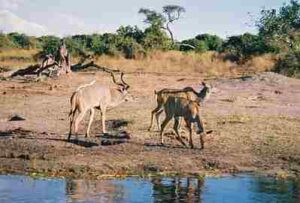
*Vegetation Types in the Namibian Savanna
The vegetation in Namibian savannas varies based on factors such as soil types, water availability, and altitude. Acacia species, grasses, and other drought-resistant plants are common in these ecosystems. Along watercourses, riparian vegetation thrives, contributing to the overall biodiversity of the savanna.
*Wildlife and Conservation Areas in the Namibian Savanna
Namibia's savannas are home to diverse wildlife, including large mammals such as elephants, lions, giraffes, and various antelope species. Conservation areas and national parks, such as Etosha National Park, Bwabwata National Park, and Mudumu National Park, contribute significantly to the preservation of the savanna ecosystem and its biodiversity.
Human settlements and agricultural activities in Namibia also influence the distribution of savanna ecosystems. In some regions, traditional land use practices, including livestock grazing and subsistence farming, interact with the natural dynamics of the savanna.
*General Characteristics of the Savanna Ecosystem in Namibia
The savanna ecosystem in Namibia is characterized by a diverse and dynamic combination of soil types, hydrological patterns, and vegetation. These elements contribute to the unique biodiversity and ecological features of the Namibian savannas.
General characteristics of the savanna ecosystem in Namibia range from its variable climate to distinctive soils, and mixed vegetation. These aspects are discussed below;
1. Namibian Savanna Climate
Namibia experiences a variety of climatic conditions, ranging from hyper-arid to semi-arid. The savanna regions typically receive more rainfall compared to the desert areas but are still subject to seasonal variations.
Rainfall is a critical factor influencing the distribution and characteristics of savanna vegetation.
2. Namibian Savanna Soil Types
Savannas in Namibia exhibit a variety of soil types influenced by factors such as geology, topography, and climate.
Common soil types include sandy soils, clayey soils, and loamy soils. The texture and composition of these soils play a role in determining the ability of the ecosystem to retain water and support vegetation.
3. Hydrological Features of the Savanna Ecosystem in Namibia
Hydrological features, such as rivers, seasonal watercourses, and wetlands, are integral to the savanna ecosystem in Namibia.
These water sources sustain vegetation, particularly along riparian zones where the water availability is higher. The hydrological patterns are often dynamic, with seasonal fluctuations in water levels influencing the distribution of plant and animal species.
4. Wildlife and Vegetation Characteristics of the Namibian Savanna
The vegetation in Namibian savannas is adapted to the semi-arid conditions, characterized by a mix of grasses, shrubs, and scattered trees.
Common plant species include acacias, mopane trees, bushwillows, and various grass species. The vegetation structure varies, with open grasslands, woodlands, and savanna thickets being prominent features.
This section summarily discusses riparian vegetation, adaptations to fire, wildlife, biodiversity, conservation, human interaction, land use, and ecotourism opportunities in the Namibian Savanna, as follows;
Along watercourses and in areas with higher water availability, savannas feature riparian vegetation. This includes trees and shrubs adapted to the proximity of water, contributing to the overall biodiversity of the ecosystem. These areas often serve as important habitats for various wildlife species.
Fire is a natural component of savanna ecosystems, and vegetation in Namibian savannas is adapted to periodic burning. Some species have evolved mechanisms to withstand or even benefit from fires, influencing the composition and structure of the vegetation.
Namibian savannas support a diverse array of wildlife, including large mammals such as elephants, giraffes, zebras, antelopes, and predators like lions and leopards. The availability of water in certain regions attracts a concentration of wildlife, especially during the dry season.
Savanna ecosystems in Namibia are recognized as biodiversity hotspots, hosting a rich variety of plant and animal species. The mosaic of different vegetation types and the interaction of diverse habitats contribute to the overall high biodiversity of these regions.
Several conservation areas and national parks in Namibia, such as Etosha National Park, Bwabwata National Park, and Mudumu National Park, are located in savanna regions. These protected areas play a crucial role in preserving the unique characteristics and biodiversity of the Namibian savanna ecosystem.
Human activities, including agriculture, livestock grazing, and settlement, intersect with the savanna ecosystem in Namibia. Traditional land-use practices by local communities influence the dynamics of vegetation and wildlife, highlighting the importance of sustainable land management.
The scenic landscapes, diverse wildlife, and cultural richness of Namibian savannas make them attractive for ecotourism. Tourists have the opportunity to experience the natural beauty of the savanna, observe wildlife, and engage in activities that promote the conservation and sustainable use of these ecosystems.
Namibian Savanna Woodlands Animals
Namibian savanna woodlands are home to a diverse array of wildlife, each species adapted to the unique conditions of this ecosystem.
Examples of animals in the Namibian savanna woodlands are; cheetah, lion, wildebeest, caracal, zebra, ostrich, African pygmy falcon, and African Savanna elephant.
Some of their characteristics are discussed briefly below;
1. Cheetah (Acinonyx jubatus)
Cheetahs are renowned for their incredible speed, making them the fastest land animals. They have slender bodies, distinctive black tear marks on their faces, and a tan coat covered with small black spots.
Cheetahs are primarily solitary hunters, relying on bursts of speed to catch their prey.
2. Lion (Panthera leo)
Lions are iconic big cats known for their social behavior and the presence of manes in males.
They are apex predators and often live in prides, consisting of related females and their offspring. Lions are powerful hunters that prey on a variety of herbivores found in the savanna.
3. Wildebeest (Connochaetes spp.)
The blue wildebeest is a large, hoofed mammal characterized by its robust build, curved horns, and a distinctive beard that is usually light-colored. They are known for their annual migrations in search of water and grazing opportunities.
Wildebeests play a key role in the savanna ecosystem as both prey and contributors to nutrient cycling.
4. Caracal (Caracal caracal)
The caracal is a medium-sized wild cat with distinctive tufted ears and a slender, athletic build. Known for their agility and excellent jumping abilities, caracals are solitary predators that feed on small mammals, birds, and sometimes larger prey.
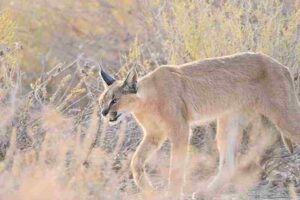
5. Zebra (Equus zebra spp.)
Zebras are easily recognized by their distinctive black-and-white striped coats. The plains zebra is common in savanna woodlands.
They are herbivores, feeding on grasses, and their stripes are thought to serve as camouflage and protection from predators.
6. Ostrich (Struthio camelus)
The ostrich is the world's largest and heaviest bird. They have long legs adapted for running, powerful thighs, and a distinctive neck and head.
Ostriches are flightless and are known for their speed, using their strong legs to escape predators.
7. African Pygmy Falcon (Polihierax semitorquatus)
The African pygmy falcon is a small bird of prey with striking plumage. It has a combination of white, black, and chestnut colors. These falcons are often found in savanna woodlands and are known for their cooperative breeding behavior.
8. African Savanna Elephant (Loxodonta africana)
African savanna elephants are the largest land animals. They have large, distinctive ears and tusks and are known for their complex social structures. Elephants play a crucial role in shaping the savanna ecosystem through their feeding habits, water hole digging, and seed dispersal.
These species collectively contribute to the overall biodiversity and ecological balance of Namibian savanna woodlands.
The interactions between predators and prey, herbivores and vegetation, and the adaptation of each species to the challenges of the environment make the savanna a dynamic and fascinating ecosystem. Conservation efforts in Namibia focus on protecting these species and their habitats to ensure the long-term health of the savanna ecosystem.
Namibian Savanna Woodlands Climate
The climate in Namibian savanna woodlands is influenced by the country's diverse geography, which includes coastal areas, plateaus, and inland plains. The climate in these woodlands can vary based on factors such as location, elevation, and proximity to water sources.
Characteristics of the climate in Namibian savanna woodlands can be discussed in terms of temperature, precipitation, humidity, microclimate, and susceptibility to drought. These factors are highlighted as follows;
1. Temperature
Temperature in the Namibian savanna is prone to seasonal variations and extreme conditions.
Namibian savanna woodlands typically experience distinct seasonal temperature variations. Summers, from November to April, are characterized by higher temperatures, while winters, from May to October, are cooler.
Inland areas may experience higher daytime temperatures during the summer, with occasional extremes exceeding 40 degrees Celsius (104 degrees Fahrenheit). Winters can bring cooler temperatures, especially during the night.
2. Precipitation
Precipitation in the Namibian savanna can be discussed in terms of its seasonality and regional variability.
The rainfall pattern in Namibian savanna woodlands follows a distinct seasonal cycle. The summer months (November to April) are the wet season, with increased rainfall. Winters (May to October) are generally dry, with little to no precipitation.
Precipitation levels can vary across different regions of Namibia. Northern areas, such as the Caprivi Strip, may receive more rainfall than central and southern regions.
3. Humidity
Namibia is characterized by low humidity levels, especially in the inland areas. The dry air is a result of the country's arid to semi-arid climate.
Areas along watercourses and near water sources may experience slightly higher humidity levels, contributing to the development of riparian vegetation.
4. Microclimates
Higher elevations, such as the Waterberg Plateau, can experience cooler temperatures compared to lowland areas. Elevation influences both temperature and precipitation patterns in the savanna woodlands.
Coastal areas, such as those along the Atlantic Ocean, may experience a moderating effect on temperatures. The Benguela Current along the coast can contribute to cooler conditions and occasional coastal fog.
Drought Risk in the Namibian Savanna
Namibian savanna woodlands are susceptible to periodic droughts, especially during dry seasons.
Prolonged droughts can impact vegetation, water availability, and wildlife, emphasizing the arid nature of the climate.
Conclusion
Human impacts on the savanna ecosystem are;
1. Influx of Invasive Species
2. Land Cover Losses due to Overgrazing
3. Biodiversity Loss to Poaching
4. Habitat Shrinkage by Urban Encroachment
5. Increased Desertification Rate
6. Climate Change and Regional Warming
7. Land Conversion for Agriculture
8. Increased Erosion due to Soil Exposure
9. Changes to Natural Fire Regimes
10. Altered Predator-Prey Dynamics
The savanna is important due to its role in;
1. Habitat Provision for Diverse Flora and Fauna
2. Effective Sites of Carbon Sequestration
3. Tourism and Recreation Benefits
4. Knowledge Base for Scientific Research
5. Livelihood Provision for Local Communities
6. Role in Natural Buffering of Desertification

